Like many motherboard vendors ASRock has transitioned to a neutral colour palette of grey and black which help the motherboard blend into a wider range of builds. With the X299 Taichi XE ASRock has pursued a unique machinery inspired design with a gear printed onto the PCB and a gear shaped chipset heatsink.
It's a neat and tidy overall design that's more refined and grown up than some of the red and black gaming designs we've seen from ASRock in the past.
RGB lighting is not a strong point of the X299 Taichi XE since only the chipset heatsink is illuminated and the brightness is only modest. There is a full range of customisable colours and lighting modes, as well as the option to expand to two RGB lighting strips, which gives system builders something to work with.
ASRock provides two extra SATA ports than most motherboard vendors on this motherboard. Ports SATA3_A1 and SATA3_A2 come via ASMedia ASM1061 taking the SATA III count to ten. Combining those ten SATA ports with triple M.2 and dual Ethernet makes the Taichi XE a multimedia powerhouse.
Along the bottom of the motherboard is a debug code reader but there aren't any onboard power or reset buttons. ASRock's two RGB headers are located near the 24 pin and near the last PCIe slot and will take 12V G R B or 12V B R G (with an adapter).
The Realtek ALC1220 codec sits unshielded on an isolated PCB with five 100uF 10v Nichicon fine gold audio capacitors and a Texas Instruments NE5532 operational amplifier.
ASRock provides four full-sized PCIe 3.0 X16 slots and a single PCIe 2.0 X1 slot and fits in three M.2 slots between those PCIe lanes. There's a cut-out into the chipset heatsink to facilitate all the connectivity.
The revised CPU VRM design includes a different heatsink which has a heatpipe flowing into another heatsink in the rear I/O area. ASRock provides two fan headers around the CPU socket, 1 CPU and 1 CPU_OPT or W_PUMP.
There is a nearby CHA_FAN2 which could be used with second fans on AIO coolers but it's a shame ASRock doesn't provide additional CPU_FAN headers. That said for the W_PUMP it's just as easy to use the CHA_FAN2 header and set the speed to full.
Underneath the motherboard gives a glimpse at the complexity of the design with a whole range of ASMedia controllers down here including ASM1061 (SATA III), ASM3142 (USB 3.1), ASM1543 (USB 3.1 to Type-C) and ASM1074 (USB 3.0 Hub). A couple of Intersil ISL69138 digital PWM controllers sit on the underside too, located near the memory banks and CPU socket.
Rear I/O connectivity is provided as per below. The I/O options are generous with plenty of networking and USB options, as well as legacy PS/2. A couple of buttons for clear CMOS and BIOS flashback add extra diagnostic and troubleshooting capability.
- 2 x Antenna Ports
- 1 x PS/2 Mouse/Keyboard Port
- 1 x Optical SPDIF Out Port
- 2 x USB 2.0 Ports (Supports ESD Protection)
- 1 x USB 3.1 Type-A Port (10 Gb/s) (ASMedia ASM3142) (Supports ESD Protection)
- 1 x USB 3.1 Type-C Port (10 Gb/s) (ASMedia ASM3142) (Supports ESD Protection)
- 4 x USB 3.0 Ports (Supports ESD Protection)
- 2 x RJ-45 LAN Ports with LED (ACT/LINK LED and SPEED LED)
- 1 x BIOS Flashback Button
- 1 x Clear CMOS Button
- HD Audio Jacks: Rear Speaker / Central / Bass / Line in / Front Speaker / Microphone (Gold Audio Jacks)
The ASRock X299 Taichi XE uses a 13 phase VRM in a 12+1 configuration. 12 chokes are marked R15 with the 13th marked R30 – all of which ASRock claim are “Premium 65A Power Chokes”. The CPU socket is also littered with Nichicon 12K-rated black capacitors.
There are 13 power stage MOSFETs of which 12 are marked “27B 73AV ” (ISL99227BFRZ-T, 5 volts) and the 13th marked “27F 73AU ” (ISL99227FRZ-T, 3.3 volts). These are 60-amp “Smart Power Stage (SPS)” units (ASRock Dr. MOS) which are compatible with ISL68XX and ISL69XX digital multiphase PWM controllers, on this board ASRock is using the ISL69138 PWM controller.
Underneath the motherboard it's possible to see the design is based on six phases being doubled with ISL6617A phase doublers (marked “17AF XJHZ“) to give the 12 phase part of the 12+1 configuration. There is no cooling for this part of the VRM solution.
Three Intersil ISL69138 fully digital PWM controllers are found on the board in total, two underneath and one on top. These can operate in any configuration from 0 to 7 phases per rail (7 phases max for both), of which there are 2 rails in total. The inclusion of three would suggest that there is one ISL69138 for the CPU VRM (6+1 with a doubling of the “6” to 12) and then two ISL69138 units for the memory phases (two separate 2-phase configurations).
The memory have four ISL6596CRZ drivers in total, marked “596Z XHMZ“, and two ISL69138 PWM controllers control the four memory phases, marked “R30”. There are four Sinopower SM4337 and four Fairchild FDPC5030SG MOSFETs to support those four memory phases.
The CPU VRM heatsink has two thermal strips on the part of the heatsink nearest the CPU socket. The secondary heatsink at the rear I/O does not make direct contact with anything but is linked via a heat pipe to the CPU VRM heatsink so acts as additional heat dissipation capability.
This is an upgraded CPU VRM cooling design over the original ASRock X299 Taichi which should help keep temperatures comfortable even if using Intel's newest Core i9 Skylake-X CPUs that have up to 18-cores.
 KitGuru KitGuru.net – Tech News | Hardware News | Hardware Reviews | IOS | Mobile | Gaming | Graphics Cards
KitGuru KitGuru.net – Tech News | Hardware News | Hardware Reviews | IOS | Mobile | Gaming | Graphics Cards

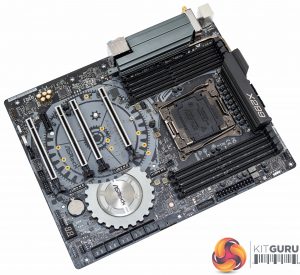
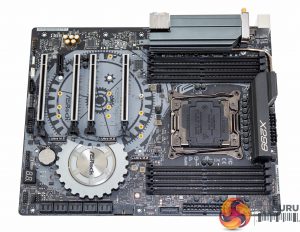
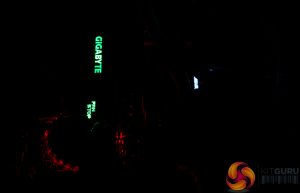
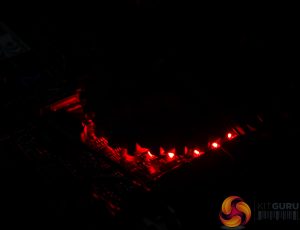


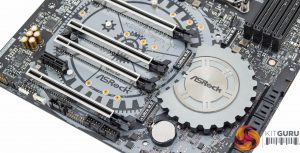
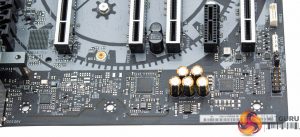
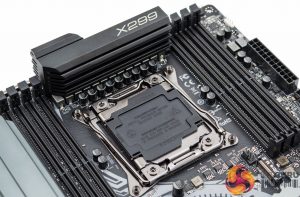



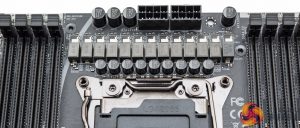
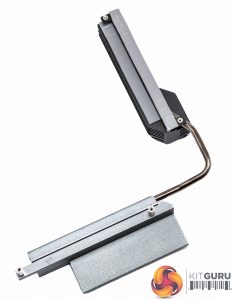

Great review. Was looking for this motherboard article.. just matched my expectation. Great pricing, better than most and offers same amount of feature set.